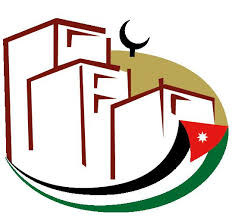It’s time Islamic scholars and financial institutions as well as Muslim social activists explored innovative ideas to better utilise waqf properties, learned lessons from the models and experiences in waqf development in various countries and showcased the progressive use of waqf and its potential to boost asset growth and revenue generation for social and community development.

– Syed Khalid Husain
Singapore
IS waqf (Islamic endowment) a purely religious institution or a social institution too? Is waqf perpetual and irrevocable or can it be temporary and revocable as well? Should waqf be governed by the government and statutory boards or religious and civic regulatory bodies? Can the social role of Islamic finance be realised by waqf-based microfinance? How can waqf assets be integrated into the Islamic financial sector and developed to generate income for the poor and needy? These and other such questions and issues are worth pondering over as hundreds of thousands of waqf assets or awqaf scattered all over the world, especially the Indian subcontinent, have little or no use at all for their intended beneficiaries.
Waqf is a special kind of philanthropic deed in perpetuity. It involves donating a fixed asset which can produce a financial return or provide a benefit. A waqf usually benefits the community by offering a service, such as a hospital or a university, that is useful to society. Once a Muslim has donated an asset for charity, it becomes the property of Allah and cannot be sold, given away or inherited. This form of ongoing and recurring charity is called Sadaqah Jariyah.
 Waqf assets have been widely used throughout Islamic history to develop and support communities. However, the trends in awqaf have evolved over time. During the days of the Prophet Muhammad ﷺ, awqaf included wells for drinking water and plantations. During the Ottoman era, soup kitchens and public facilities such as hospitals were commonly considered awqaf. Today, however, awqaf typically involve buildings, plots of land or other assets for Islamic or charitable purposes with no intention of reclaiming those assets.
Waqf assets have been widely used throughout Islamic history to develop and support communities. However, the trends in awqaf have evolved over time. During the days of the Prophet Muhammad ﷺ, awqaf included wells for drinking water and plantations. During the Ottoman era, soup kitchens and public facilities such as hospitals were commonly considered awqaf. Today, however, awqaf typically involve buildings, plots of land or other assets for Islamic or charitable purposes with no intention of reclaiming those assets.
Historically, the revenue generated by waqf has been applied to traditional uses such as maintenance of religious buildings. But this is changing now. In some countries, the proceeds from waqf properties are used to contribute more widely to society as the rules governing the administration of waqf become increasingly progressive. The evolution of waqf is, in a sense, about how Muslims are adapting traditional concepts to modern living. Practically all Muslim nations, and even some non-Muslim countries, have a ministry, statutory board or autonomous department that manages awqaf, which make up a sizeable amount of the national income in several Muslim countries.
Islamic scholars and financial experts say that in addition to awqaf being religiously significant, the idea underlying them can be of significance to larger community development. This is because the causes supported through awqaf include Islamic and contemporary education; poverty alleviation programmes; disaster relief; free health services; and heritage, culture and environment protection.
Financial industry’s role
However, according to a former senior Islamic Development Bank (IDB) official, it is generally felt that many waqf institutions have stagnated and are not performing the desired functions of enhancing social welfare and poverty alleviation. “This is reflected not only in a smaller proportion of new awqaf being established relative to non-profit organisations, but also in the dormant status of the existing waqf institutions. The Islamic financial industry can play an important role in developing these institutions so that their revenue-generating capacity can be enhanced,” says Dr Ahmed Hariri, currently advisor at the Saudi Ministry of Environment, Water and Agriculture, in a paper.
Dr Monzer Kahf, a US-based Islamic finance consultant, offers some radical ideas. He says waqf is a “socially based and not a religiously based” institution and it is for the poor and needy. To support his contention, he says waqf existed even before Islam as, according to some Muslim jurists, the first waqf that ever existed was the Ka’abah in Makkah, the first house of worshipping Allah set for people. However, he stresses waqf should have a righteous objective (birr). As waqf has a cumulative effect, it should benefit future generations, the former IDB senior research economist argues.
To some degree of surprise, though, he observes that “perpetuity of waqf is not necessary and temporary waqf is a glorious idea”. In this regard, he suggests making waqf partial, revocable and temporary – for instance, offering a car park for two days a year for Eid prayers. He calls for institutionalising the concept of waqf based on competitiveness and not under government or a religious institution “in its narrow sense” and setting a strict civic regulatory system with Shariah advisory boards. However, the permanency of the will of a waqf founder should be respected, the former professor maintains.
He also calls for developing the concept of awqaf as banks offering Islamic financial schemes; starting investment-like supervision of awqaf; developing awqaf as a Shariah-compliant insurance (takaful) and public endowment; developing a system based on awqaf for microfinance; activating the idea of cash waqf to provide financing and loans to the needy; and evolving a system to avoid fragmentation of waqf revenues.
Taking an opposite view, a Malaysian Islamic academic, stresses the role of state control of awqaf. The state should be the sole trustee of all waqf properties to help avoid their abuse and misappropriation, observes Ahmad Hidayat Buang of the University of Malaya, Kuala Lumpur, in his paper.
Accounting standards
Another former IDB official views waqf as a “non-profit sector that operates for altruistic purposes that Islam regards as charitable”. Linking awqaf to the Islamic financial system, Dr Hisham Dafterdar says supporting awqaf organisations should be part of Islamic banks’ corporate social responsibility. The Australia-based banker also stresses the need to set Islamic accounting standards for waqf organisations which, like any other organisation, should generate revenues to fund their operations.
As the waqf institutions’ wealth remains untapped, the Islamic finance sector can play a very fruitful role in promoting awqaf, opines Islamic law and finance expert Dr Habib Ahmed of Durham University in a paper. He says the role of Islamic finance can be realised though waqf-based microfinancing and stresses the need to introduce waqf-based Islamic microfinancing institutions.
As eradication of poverty is an important objective of the Islamic economic system, its financial sector should reflect this goal, he argues. Waqf can be more than a tool of Islamic financing sector as it can be utilised for the public good. Both Islam and microfinance intend to empower the poor, and awqaf can help reduce the cost of microfinancing, points out the UK-based Islamic economist.
Dr Yahia Abdul-Rahman, who is known as the Father of Islamic Banking in North America, contends that waqf was not pioneered and perfected to only help the poor and needy but, historically, waqf properties were used to empower the people and attract others to Allah. Therefore, it was the prime responsibility of Muslim activists as servants of Allah to convince government officials on the benefits of unlocking the economic potential of waqf.
The objective of waqf in Islam is to establish the socio-economic welfare among the Muslim society by making the haves realise that they must share their wealth with the needy, the poor and the helpless, according to Malaysian Islamic finance expert Hidayatul Islam.
On how waqf can be developed by Islamic finance, eminent Malaysian Shariah scholar Dr Mohd Daud Bakar suggests modes such as Ijaratan (lease and lease back), BOT (build, operate and transfer) and sukuk mudharaba and sukuk musharakah to finance business ventures. Lamenting that less attention is given to waqf compared to zakat, he suggests creating new awqaf for the betterment of society.
The tasks ahead
In the light of above observations, it is time Islamic scholars and financial institutions as well as Muslim social activists explored innovative ideas to better utilise waqf properties, learned lessons from the models and experiences in waqf development in various countries and showcased the progressive use of waqf and its potential to boost asset growth and revenue generation for social and community development.
They should also offer insights into country experiences and practical solutions to develop plans for waqf to integrate it into the Islamic financial sector and highlight the role of waqf in the development of Islamic finance and vice versa. There is also need to address the challenges in the development of waqf and critically examine its management, regulation and governance to enhance its function as an institution for community development.
Another thing they should do is to focus on Islamic asset management via waqf, link Islamic real estate investment trusts with waqf and raise waqf funds through mutual funds. The aim should be to create an impetus to develop theories, models and products that would harmonise waqf and Islamic finance to become a broad-based integrated system – locally, regionally and globally.
To keep a clean record of awqaf, the following proposals may be considered: Creating a digitised database of awqaf institutions; collecting and publishing all contemporary fatwas on awqaf; establishing governance and accounting standards for awqaf; creating a waqf microfinancing foundation to assist in microfinancing programmes; and developing programmes for capacity building in the awqaf sector.
– The writer is a Singapore-based senior journalist. He can be reached at skhusain@yahoo.com and WhatsApp +65 91195711




